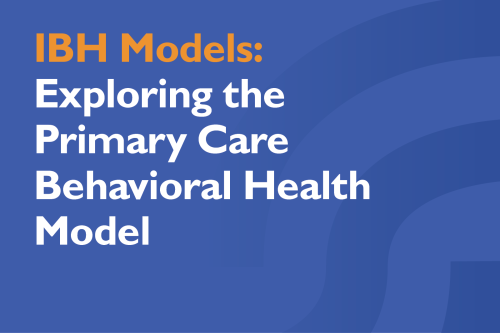IBH Models: Exploring the Primary Care Behavioral Health Model

The Primary Care Behavioral Health (PCBH) model is a transformative approach to integrating behavioral health services into primary care settings. This model aims to enhance the overall health and well-being of patients by addressing both physical and mental health needs in a coordinated, efficient manner.
What is the PCBH Model?
The PCBH model is designed to integrate behavioral health professionals into primary care teams. These professionals, often referred to as Behavioral Health Consultants (BHCs), work alongside primary care providers to offer comprehensive care. The model is population-based, meaning it focuses on the entire patient population within a primary care setting rather than individual cases.
Key Components of the PCBH Model
- Behavioral Health Consultants (BHCs): BHCs are licensed professionals, such as psychologists or clinical social workers, who provide behavioral health services within the primary care environment. They offer brief, targeted interventions for a range of behavioral health issues, including mental health conditions, substance use disorders, and chronic health conditions.
- Team-Based Care: The PCBH model emphasizes collaboration among healthcare providers. BHCs work as part of the primary care team, sharing responsibility and liability for patient care. This team-based approach ensures that patients receive holistic care that addresses both their physical and mental health needs.
- High Volume Services: BHCs provide high volume services that are accessible and routine within the primary care setting. This means that behavioral health interventions are readily available to patients during their primary care visits, reducing barriers to accessing mental health care.
- Prevention and Early Intervention: The PCBH model focuses on prevention and early intervention strategies. By integrating behavioral health into primary care, providers can identify and address behavioral health issues early, preventing them from escalating into more serious conditions.
Benefits of the PCBH Model
The PCBH model offers numerous benefits for patients and healthcare providers:
- Improved Access to Care: By embedding behavioral health services within primary care, patients have easier access to mental health care. This is particularly beneficial for individuals who may face barriers to accessing traditional mental health services such as those in rural communities and lower socioeconomic statuses.
- Enhanced Patient Outcomes: The collaborative approach of the PCBH model leads to more comprehensive and effective treatment plans, improving overall health outcomes for patients.
- Reduced Stigma: Integrating behavioral health into primary care helps normalize mental health care, reducing the stigma associated with seeking help for mental health issues.
- Cost-Effective Care: Early intervention and coordinated care can prevent the need for more expensive treatments such as emergency room visits.
Case Study: A Community Mental Health Center in a US Metropolitan Area
Overview: The CMHC implemented the PCBH model to enhance access to behavioral health services, reduce stigma, and improve treatment options for underserved populations.
Approach:
- Multidisciplinary Teams: The CMHC utilized a team-based approach, integrating behavioral health consultants into their primary care teams with behavioral health consultants having equal authority in the treatment team.
- Universal Screening: The CMHC implemented system-wide screenings for mental health conditions during primary care visits, facilitating early identification and intervention by a behavioral health consultant in the primary care environment.
- Collaborative Care: Behavioral health consultants worked closely with primary care providers to develop comprehensive treatment plans inclusive of physical and mental health treatment.
Outcomes:
- Improved Access: Patient had easier access to mental health services within the primary care setting.
- Enhanced Outcomes: The collaborative approach led to better health outcomes and reduced emergency room visits.
- Reduced Stigma: Integrating mental health care into primary care helped normalize seeking help for mental health concerns.
Conclusion
The Primary Care Behavioral Health model represents a significant advancement in the integration of behavioral health services into primary care. By fostering collaboration among healthcare providers and focusing on prevention and early intervention, the PCBH model enhances patient care and improves health outcomes. As healthcare continues to evolve, the PCBH model will play a crucial role in addressing the complex needs of patients and promoting overall health and well-being.
Author: Anthony Motsinger, PhD, LCSW

